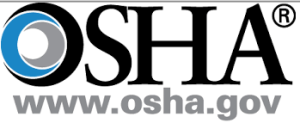On Jan. 26, OSHA announced it issued new enforcement guidance making its penalties more effective to stop employers from repeatedly exposing workers to life-threatening hazards or failing to comply with workplace safety and health requirements. The new enforcement guidance covers general industry, agriculture, maritime and construction industries. It becomes effective on March 27, 2023.
OSHA Regional Administrators and Area Office Directors now have the authority to cite certain types of violations as “instance-by-instance citations” for cases where the agency identifies “high-gravity” serious violations of OSHA standards specific to certain conditions where the language of the rule supports a citation for each instance of non-compliance. The current policy has been in place since 1990 and applies only to egregious willful citations. These conditions now include lockout/tagout, machine guarding, permit-required confined space, respiratory protection, falls, trenching, and for cases with other-than-serious violations specific to recordkeeping. In 2021, fall protection, respiratory protection, lockout tagout, and machine guarding were among OSHA’s Top 10 Most Frequently Cited Standards.

Under this guidance, the decision to use IBI citations “should normally be” based on at least one of these factors:
• The employer has received a willful, repeat, or “failure to abate” violation within the past five years where that classification is current.
• The employer has failed to report a fatality, inpatient hospitalization, amputation, or loss of an eye pursuant to the requirements of 29 CFR 1904.39.
• The proposed citations are related to a fatality or catastrophe.
• The proposed recordkeeping citations are related to injury or illness(es) that occurred as a result of a serious hazard.
In a second action, OSHA is reminding its Regional Administrators and Area Directors of their authority not to group violations, and instead cite them separately to more effectively encourage employers to comply with the intent of the OSH Act.
OSHA reminds its regional administrators and area directors of their authority not to group violations, but, instead cite them separately to more effectively encourage employers to comply with the intent of the Occupational Safety and Health Act. Like the first guidance change, this one also may result in an uptick in the number of citations OSHA issues following an investigation and likely will lead to increased penalties for employers.
OSHA states that grouping violations should be considered when:
• Two or more serious or other-than-serious violations constitute a single hazardous condition that is overall classified by the most serious item;
• Grouping two or more other-than-serious violations considered together create a substantial probability of death or serious physical harm; or
• Grouping two or more other-than-serious violations results in a high gravity other-than serious violation.

OSHA says that regional administrators and area directors should not group violations if the evidence allows for separate citations in cases in which grouping does not elevate the gravity or classification and resulting penalty. In situations where an existing directive encourages grouping, regional administrators and area directors may use discretion to cite separately, the guidance states. These situations include, but are not limited to, cases in which violations have differing abatement methods; each violative condition may result in death or serious physical harm; and each violative condition exposes workers to a related but different hazard.
Assistant Secretary for Occupational Safety and Health Doug Parker explained OSHA’s rationale behind the guidance: “Smart, impactful enforcement means using all the tools available to us when an employer ‘doesn’t get it’ and will respond to only additional deterrence in the form of increased citations and penalties.” He continued, “[T]his is intended to be a targeted strategy for those employers who repeatedly choose to put profits before their employees’ safety, health and wellbeing. Employers who callously view injured or sickened workers simply as a cost of doing business will face more serious consequences.”
OSHA penalties have long been criticized by some advocacy groups and members of Congress as insufficient. The latest OSHA enforcement guidance can be viewed as an attempt by the agency to respond to that criticism.
When you consider that ever since Congress passed the Federal Civil Penalties Inflation Adjustment Act Improvements Act in 2015, the cost of OSHA violation has been adjusted annually based on cost-of-living adjustments, you quickly realize that one OSHA visit can now become very expensive for an employer and very well may force businesses out of business.
 Keven Moore works in risk management services. He has a bachelor’s degree from the University of Kentucky, a master’s from Eastern Kentucky University and 25-plus years of experience in the safety and insurance profession. He is also an expert witness. He lives in Lexington with his family and works out of both Lexington and Northern Kentucky. Keven can be reached at kmoore@higusa.com
Keven Moore works in risk management services. He has a bachelor’s degree from the University of Kentucky, a master’s from Eastern Kentucky University and 25-plus years of experience in the safety and insurance profession. He is also an expert witness. He lives in Lexington with his family and works out of both Lexington and Northern Kentucky. Keven can be reached at kmoore@higusa.comFor instance, OSHA’s 2023 maximum penalties for serious and other-than-serious violations have just increased from $14,502 per violation to $15,625 per violation and if you have 5 people working up on a roof without proper fall protection, then that fine can now cost you $78,125 removing any profitability may have on that job.
Then God forbid if they catch your guys on a roof again without the proper fall protection, 6 months later, the new maximum penalty for willful or repeated violations is $156,259 per violation per incident.
In the big picture, these changes in enforcement guidance are important enforcement tools to help deter employers from disregarding their responsibilities to protect workers and ensure compliance with OSHA standards and regulations.
So in short what this means is that Big Brother will grow 2 feet taller and their teeth have been sharpened and employers need to be prepared. Especially when you consider that one OSHA visit could result in losing a full year of profitability. It also means that your EHS manager very well becomes your most valuable player in the years to come.
In my 30 years as a risk management & safety professional I have often times found Environmental Health & Safety (EHS) managers not being accepted for the value that they offer and are sometimes prophets not believed in their own land. It’s difficult to quantify the value and return on their investment as your EHS manager because their results are not always quantifiable. For instance, how do you quantify a death or a serious injury that was prevented?
However these new OSHA initiatives, should very quickly elevate most EHS managers into a most valuable player role within many organizations and if not soon, it will be a matter of time.
I also predict that those organizations that invest in safety and make safety a priority will be okay, however with this new enforcement guidance many who do not will eventually be forced to pay and comply, and or will be ran out of business.
BE Safe My Friends























